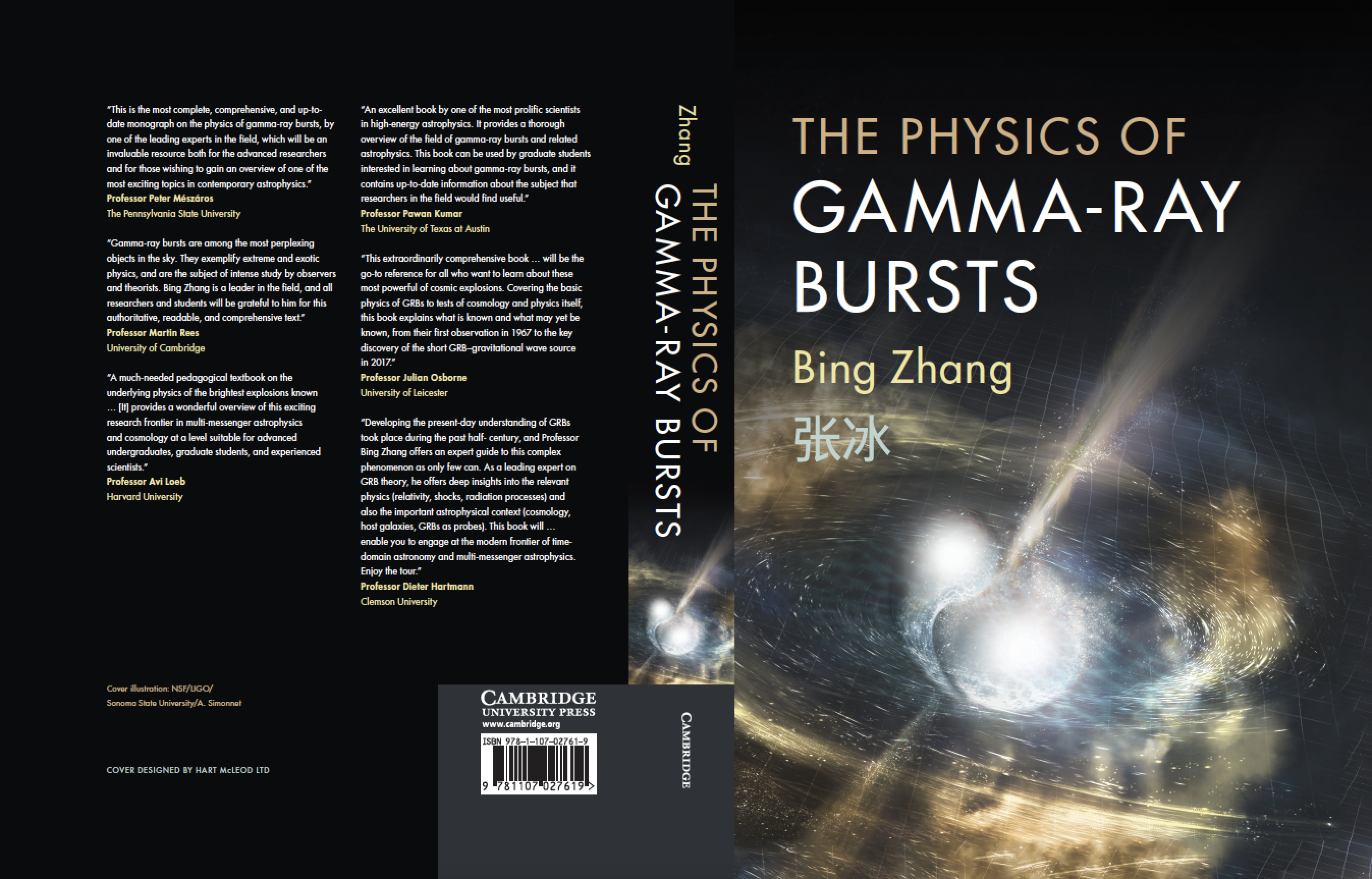Gamma-Ray Bursts
Gamma-ray bursts (GRBs), intense bursts of gamma-rays coming from the deep space, are the most powerful explosions in the universe since the Big Bang. They signify deaths of massive stars or collisions between one neutron star and another compact object (either a neutron star or a black hole).
As stellar scale events located at cosmological distances, GRBs make unique connections between different branches of astrophysics, including stellar astrophysics, compact star physics, interstellar medium astronomy, galactic astronomy, and cosmology. As the most luminous events in the universe, they are the targets of the electromagnetic telescopes of all wavelengths (radio, infrared, optical, ultraviolet, X-rays, MeV gamma-rays, GeV gamma-rays and even TeV gamma-rays) as well as non-electromagnetic detectors (high energy neutrinos, gravitational waves, and ultra-high energy cosmic rays).
I have been spending substantial time solving the mystery of GRBs, both theoretically and observationally, in collaboration with many excellent scientists over the world, including dozens of students/postdocs who worked in my group. The subjects I have studied include many aspects of GRBs, such as progenitor and classification, central engine, jet composition, energy dissipation / particle acceleration / radiation mechanisms, multi-wavelength prompt emission and afterglow, multi-messenger signals, as well as GRBs within the cosmological context. The image on the right is the front and back covers of my in-depth Cambridge University Press book The Physics of Gamma-Ray Bursts. You can also find some general reviews of GRB physics from the following links:
Physics Reports (Kumar & Zhang 2015)
Comptes Rendus Physique (Zhang 2011)
Chinese Journal of Astronomy & Astrophysics (Zhang 2007)
International Journal of Modern Physics A (Zhang & Meszaros 2004)
I have been spending substantial time solving the mystery of GRBs, both theoretically and observationally, in collaboration with many excellent scientists over the world, including dozens of students/postdocs who worked in my group. The subjects I have studied include many aspects of GRBs, such as progenitor and classification, central engine, jet composition, energy dissipation / particle acceleration / radiation mechanisms, multi-wavelength prompt emission and afterglow, multi-messenger signals, as well as GRBs within the cosmological context. The image on the right is the front and back covers of my in-depth Cambridge University Press book The Physics of Gamma-Ray Bursts. You can also find some general reviews of GRB physics from the following links:
Physics Reports (Kumar & Zhang 2015)
Comptes Rendus Physique (Zhang 2011)
Chinese Journal of Astronomy & Astrophysics (Zhang 2007)
International Journal of Modern Physics A (Zhang & Meszaros 2004)
